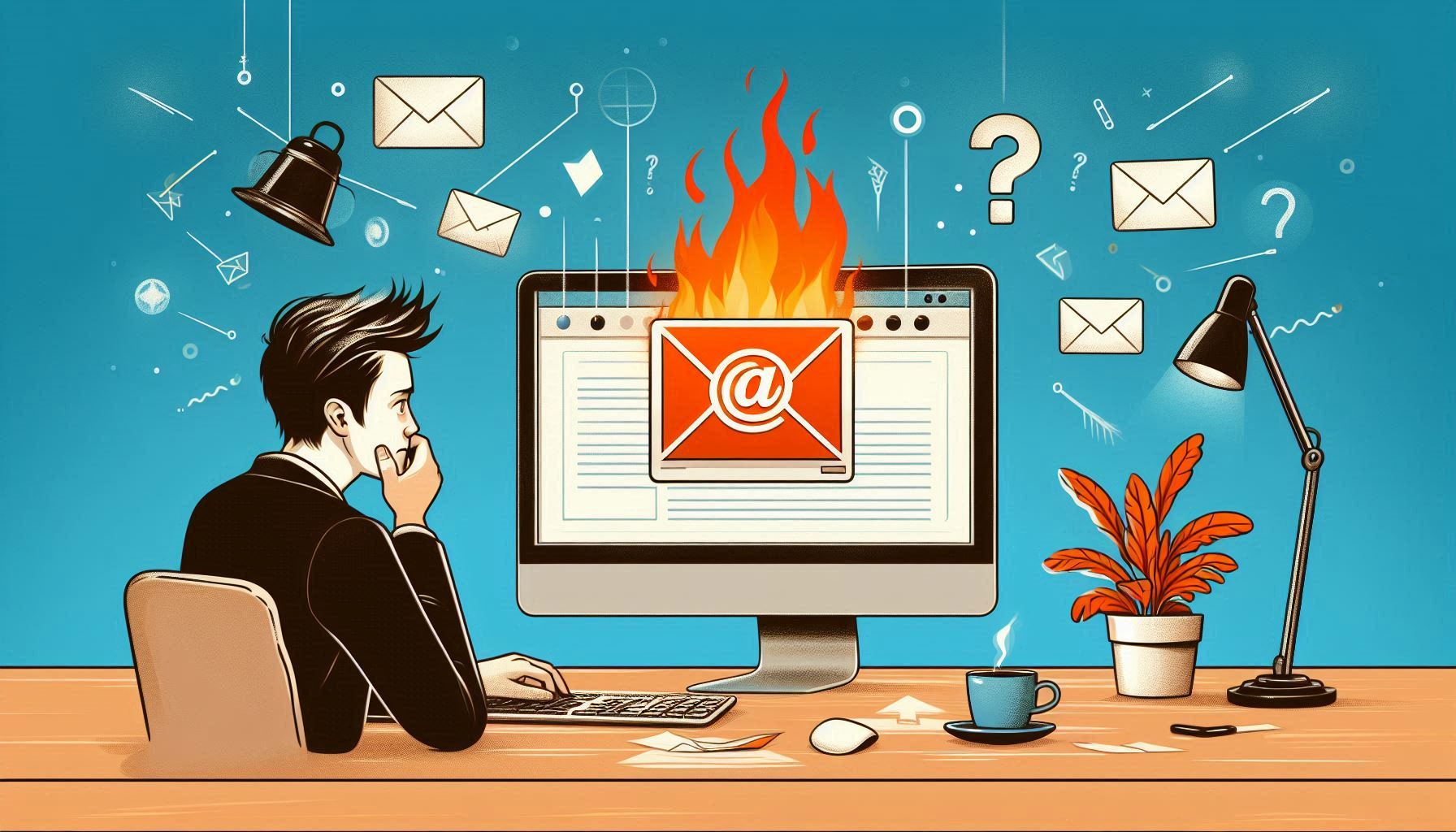In the world of digital communication, email has become one of the primary methods of both professional and personal interaction. However, just like any other form of communication, it can sometimes lead to misunderstandings or even heated exchanges. One such issue that can arise in emails is flaming. In this article, we will explore what flaming in an email is, its potential consequences, and how to avoid it.
1. Understanding Flaming in an Email
Flaming refers to sending hostile, insulting, or aggressive messages online, often with the intent to provoke a reaction or harm someone’s reputation. When this happens in emails, it’s called email flaming. This can involve personal attacks, offensive language, or rude comments that are designed to upset or hurt the recipient.
- Intentional or Unintentional: Flaming can happen whether or not the sender means to cause harm. Sometimes, people get caught up in the heat of the moment and send angry emails without realizing the impact of their words.
- Digital Aggression: Flaming is a form of online aggression that can escalate quickly, especially when emotions are running high.
2. Common Signs of Flaming in Emails
It’s important to know how to identify flaming, especially if you receive an email that could be considered aggressive. Here are some common signs:
- Offensive Language: Profanity or crude language meant to insult the recipient.
- Insults and Personal Attacks: Rather than discussing the issue at hand, the sender may attack the person personally.
- Sarcasm and Hostility: Sarcastic remarks intended to belittle or embarrass the recipient.
- Capitals and Exclamation Marks: Overuse of capital letters or exclamation marks, which can come across as shouting.
Recognizing these signs can help you differentiate between a professional disagreement and an email that’s intentionally hostile.
3. Why Does Flaming Happen?
Flaming can arise for several reasons, many of which are tied to how we communicate online. Here are some common causes of email flaming:
- Miscommunication: In the absence of face-to-face communication, it’s easy for messages to be misinterpreted. Tone can be difficult to read in an email, leading to unnecessary arguments.
- Emotional Response: People are often more likely to send aggressive emails when they are angry, frustrated, or upset. Without a physical presence, it can feel easier to “vent” through an email.
- Anonymity: The relative anonymity of email makes it easier for people to act without fear of direct consequences. This can embolden some individuals to say things they would never say in person.
4. The Impact of Flaming in Emails
Flaming is harmful in many ways, especially when it happens in a professional or personal setting. Here are some of the consequences it can bring:
- Damaged Relationships: Whether in the workplace or personal life, flaming can break trust and damage relationships. Once words are sent, they can’t be taken back.
- Misunderstandings: Flaming often causes misunderstandings, as emails can be interpreted in different ways. What one person might think is a joke could be perceived as a personal attack.
- Damage to Reputation: If flaming occurs in a professional context, it can harm the sender’s reputation and credibility, leading to professional repercussions.
- Escalation of Conflict: Flaming can escalate conflicts rather than resolve them, making it more difficult to find common ground or reach a peaceful solution.
5. How to Avoid Flaming in Emails
If you want to avoid engaging in flaming behavior, or receiving a flaming email, there are several strategies you can use:
- Pause Before Responding: If you feel angry or frustrated, take a moment to cool down before replying. This helps to prevent sending an impulsive, aggressive email.
- Use Professional Language: Even when disagreeing, always use polite, respectful language. Focus on the issue at hand instead of attacking the person.
- Be Clear and Concise: To avoid misunderstandings, make sure your message is clear and easy to understand. This reduces the chance of your email being interpreted as hostile.
- Think Twice About Tone: Since tone is hard to read in text, double-check your emails before sending them to ensure that they come across the way you intend.
- Consider Alternatives: If the situation is highly charged, consider talking in person or over the phone instead of sending an email. This allows for better communication and a more respectful exchange.
6. What to Do If You Receive a Flaming Email
If you find yourself the recipient of a flaming email, it’s important to handle the situation calmly to avoid escalating things further. Here’s what you can do:
- Don’t Respond Immediately: Like sending a flaming email, responding in anger won’t solve anything. Give yourself time to think before replying.
- Keep It Professional: If you must respond, stay professional and focused on resolving the issue. Avoid matching the tone or language of the original email.
- Address the Issue Privately: If the email came from a colleague or someone you know, consider addressing it privately rather than responding in an open forum (e.g., a group email).
- Report to Authorities: If the flaming is severe or if it occurs in a work context, you might need to report it to HR or another relevant authority.
7. The Role of Emotional Intelligence in Email Communication
Emotional intelligence (EI) plays a crucial role in preventing flaming. EI involves the ability to recognize and manage your emotions, as well as understand the emotions of others. When applied to email communication, EI helps you stay calm, choose your words wisely, and avoid misunderstandings.
- Empathy: Try to see things from the other person’s perspective. This can help you avoid jumping to conclusions or making aggressive comments.
- Self-Regulation: Being able to control your emotions, especially when communicating online, prevents you from reacting impulsively and sending an angry email.
Conclusion
Flaming in emails can be damaging and counterproductive, whether it’s happening in a professional or personal setting. By understanding what flaming is, recognizing the signs, and practicing strategies to avoid it, you can help foster more respectful and effective email communication. Remember, when in doubt, always take a moment to cool off before sending a message. With a little emotional intelligence and careful thought, you can navigate even the toughest online communication challenges with grace.



